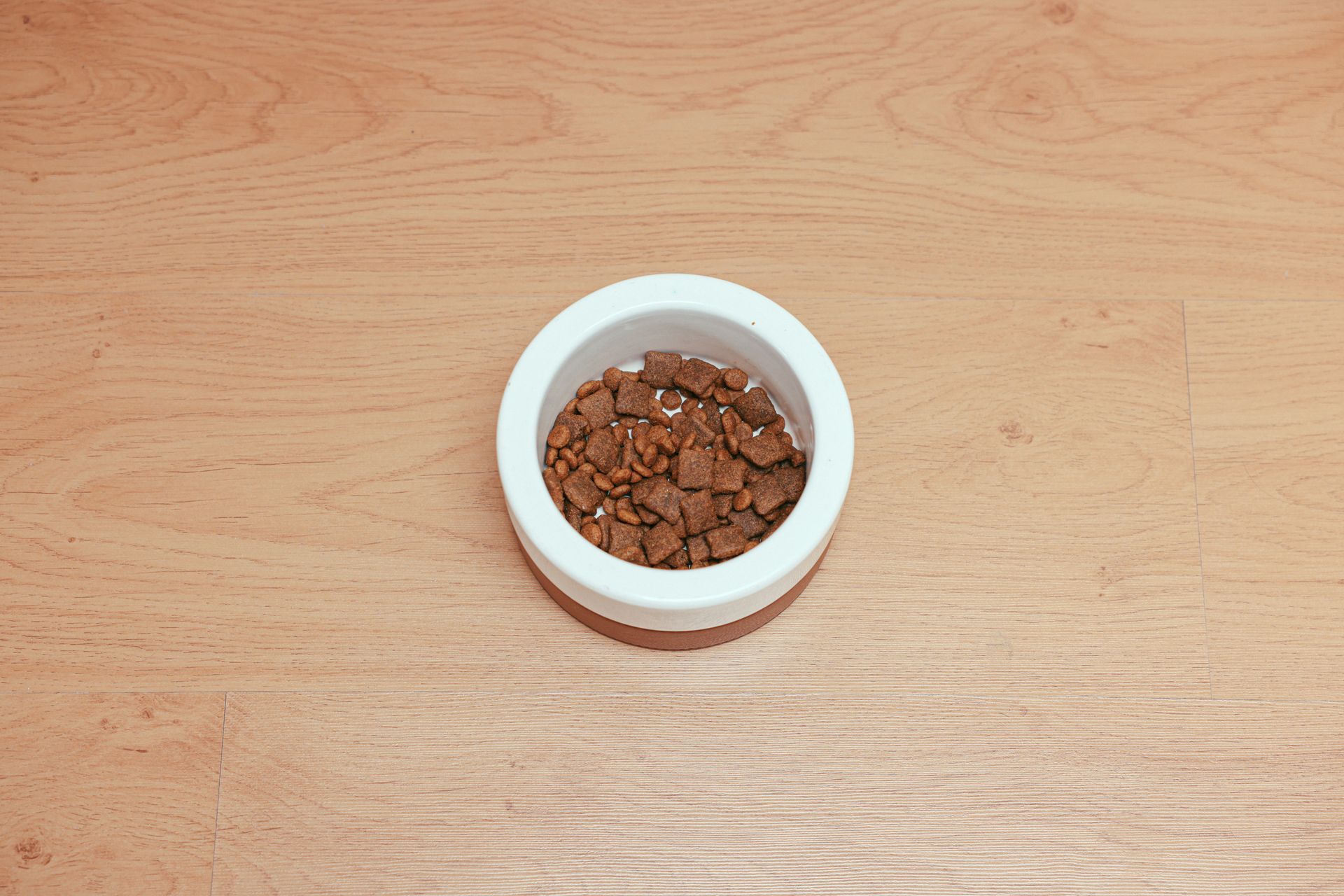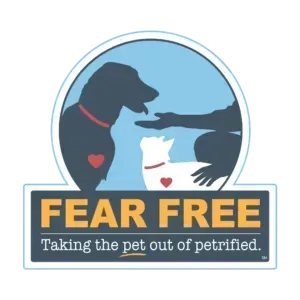Body Condition Scoring
Body Condition Scoring for Dogs
Unfortunately, we see a lot of dogs that are in need of weight loss. Sometimes, but on rare occassion, we examine dogs that are actually in need of gaining weight. One of the tools that we use to determine your dog's status is the body condition scoring system. This system uses a grading scale of 1 to 9, with 5 being ideal.
The picture shown within this article is that official body scoring system, as demonstrated by the Purina company. The overall scoring system is based roughly on the concept of BMI (Body Mass Index), which is commonly used in people. Unlike the BMI system, we do not use calipers or a percentage of body fat, instead relying on our observations of sight and touch. We begin by looking at your pet from a distance and developing a rough idea of a body condition score. This is based upon the ideal score of 5, meaning that your dog or cat has "waistline" and a "tucked up" abdomen. Essentially, the area behind the ribs should be taperded in an hour glass shape when viewed from above. Likewise, the abdomen should be tucked up in relation to the deeper portion of the chest when viewed from the side. If we can count each and every rib from a distance, the score is low. If there is no evidence of a waistline and tucked up abdomen, the score is a higher number. This first estimate is usually very accurate, although long hair coats can make the initial score inaccurate.
We then place our hands on your pet to try to confirm or adjust our visual findings. Gentle palpation over the ribcage should allow us to easily feel the ribs by using light pressure. If heavy pressure is needed, the body condition score is adjusted to a higher number. If we are able to easily palapte (feel) each and every rib, as well as the regions in between the ribs, the score will be adjusted down.
We are able to use the body condition scoring system to assist us, and you, to getting your pet to the ideal body condition. We take the body condition score and make recommendations on feeding for weight loss (at least in most cases). We also recommend increasing exercise to increase the amount of calories that are utilized every day. This is relatively easy to do with dogs, as they can be taken on walks. Fortunately, there are many convenient places to walk your dog in the Orrville, Wooster, Dalton, Rittman and surrounding regions. These include the many paved sidewalks, dog parks, several wilderness trails and the Sippo Valley Trail.
In those very few cases, we advise adjusting the amount of calories that are being consumed, as well as the amount of protein. Oftentimes, pets with a body condition score of 3 or less require a further workup. There are many disease processes that can cause a body condition score to be too low. These include parasites (worms), thyroid disorders, kidney disease, heart disease and many other chronic conditions. If a disease process is identified, we can treat your pet accordingly.
You may often hear us say that you should take a mental picture of your pet when he or she is in for one of their puppy or kitten visits. We do this because Puppies and kittens are often at an ideal body condition. It is once their metabolic needs decline that we often see them on the heavier side, or higher on the body condition scoring system.
Please note that up until this point, we have not talked about your pet's weight. We look at weight as just a number, so we place the emphasis on the body condition of your pet. We try to give you a guideline as to your pet's ideal weight once a body condition score of 5 has been achieved.












